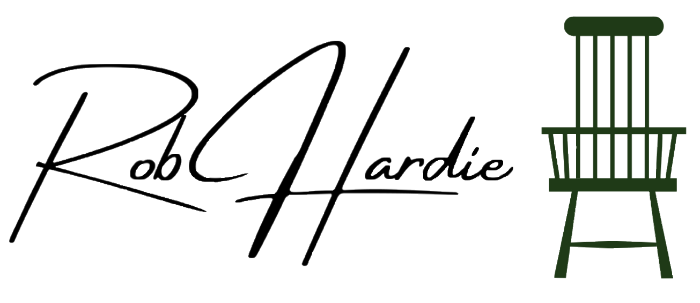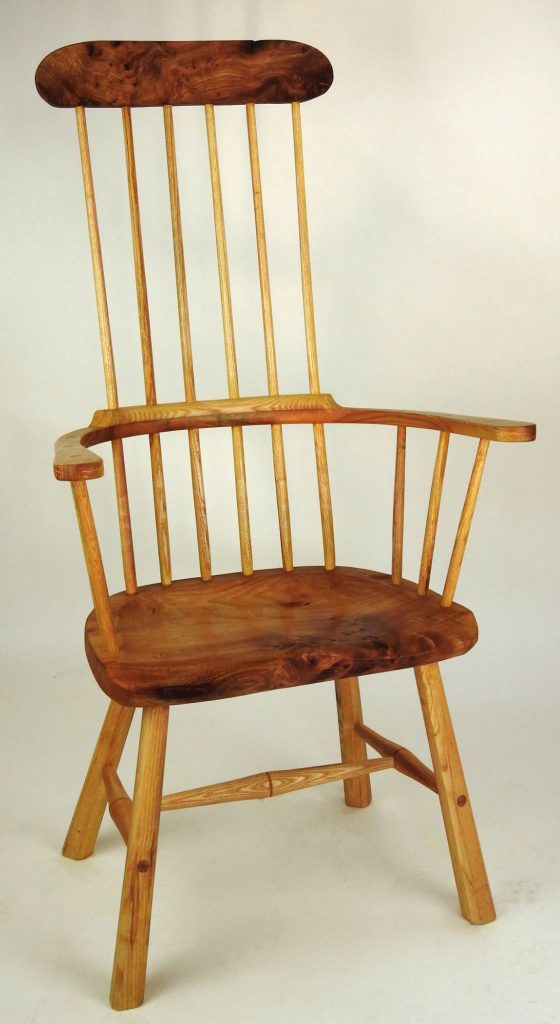

Welsh Stick Chairs
The Welsh Stick Chair is a chair with a largely undocumented history. They were considered peasants chairs and so not important enough to document. Earliest records point to the time of Hywel Dda, the 10th Century King. A drawing from the 12th century showing a judge sitting on a stick chair is perhaps the first. So it is possible that Welsh Stick Chairs were the forerunner to Windsor chairs that are seen throughout the world. Early chairs were three-legged to cope with uneven mud, stone, or slate floors. They would have been made by carpenters, coffin makers, or wheelwrights as a sideline. Called stick chairs as originally sticks from the hedgerow would have been crudely fixed to a stool to act as a backrest. Similar chairs are found throughout Wales with little local variation so they are not regionalized. However, Carmarthenshire was renowned for higher quality furniture and the examples of early chairs form this region are some of the finer works.
Construction is fairly basic and shaped wood would often be found ‘in the tree’ – curved branches used to construct the curved parts of the chair. Steam bending was not commonly used on these chairs. Early chairs were often terminated at the armrest with fuller height chairs being generally a later development. The wood would have been sourced from hedgerows and was typically oak or ash. The use of elm for the seat is common due to its resistance to splitting. Recently, The Welsh Stick Chair has seen some revival. The late John Brown, from Newport in Pembrokeshire, was central to this with his book “Welsh Stick Chairs”.
The chairs were traditionally stained using natural stains such as made from walnut husks. Chairs made with oak would typically darken considerably with age anyway.
